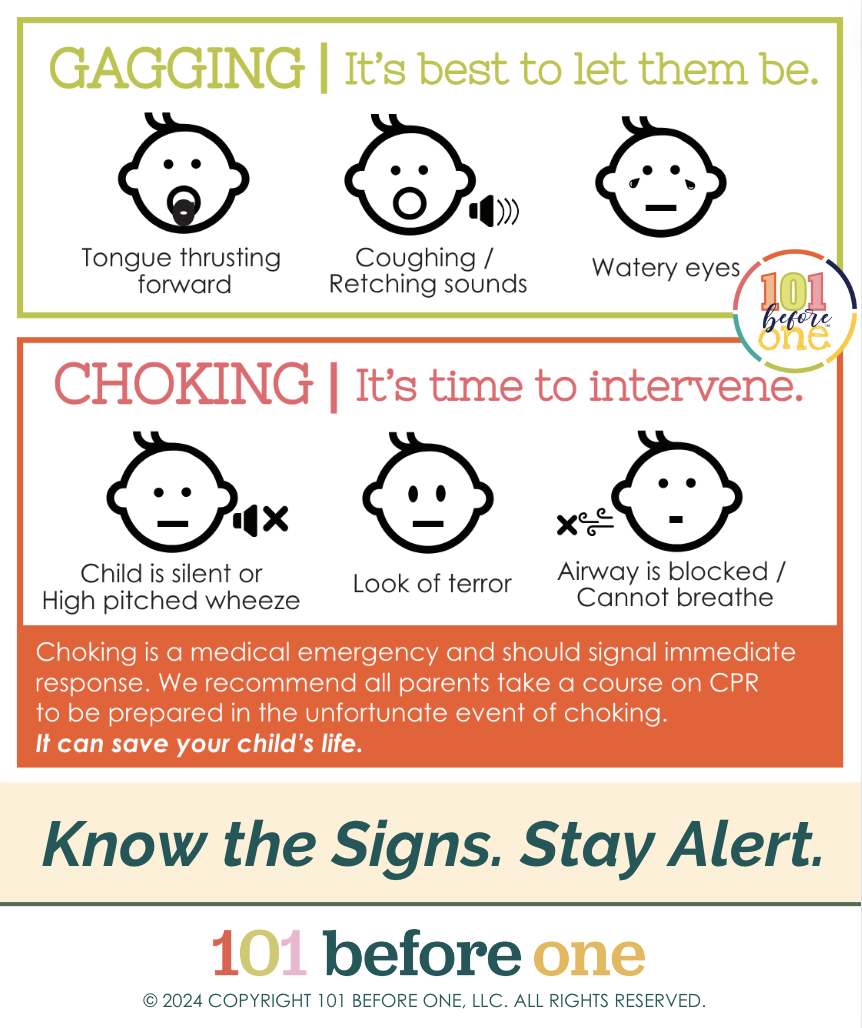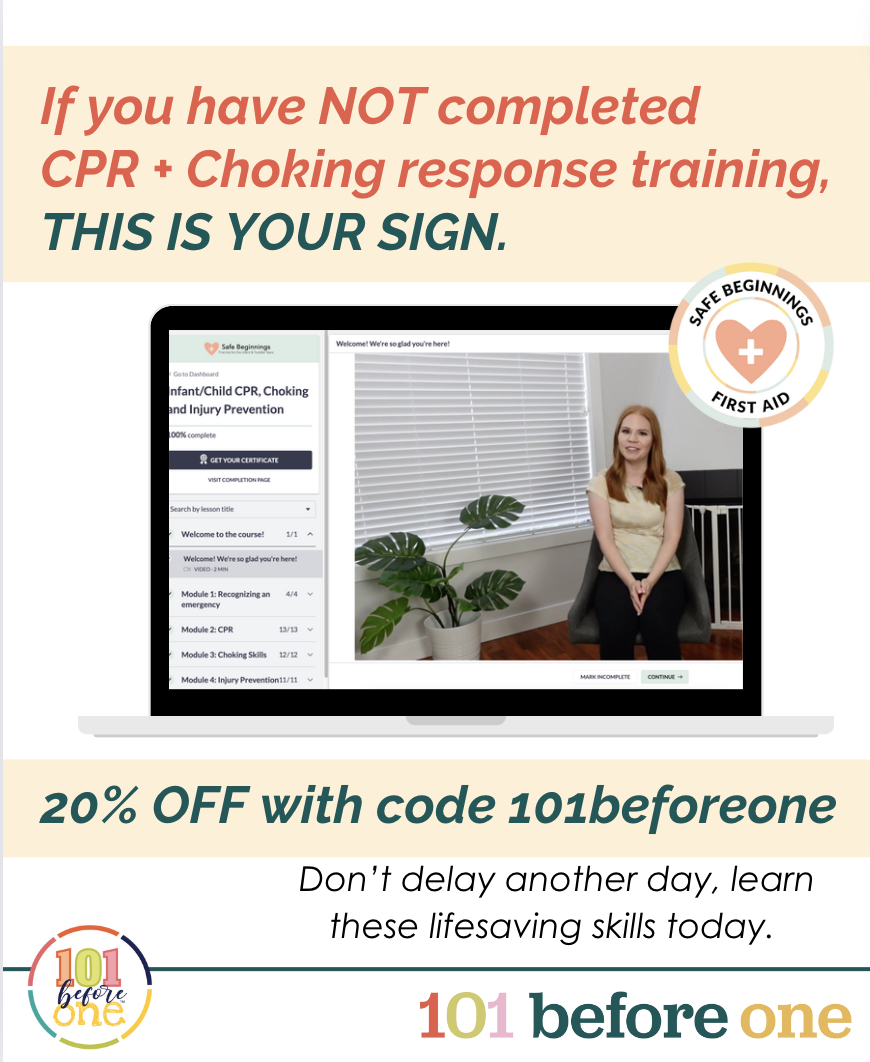Understanding Gagging vs. Choking with Baby-Led Weaning
Introduction: In the journey of parenting, one of the significant milestones is introducing solid foods to your baby. Traditionally, parents have relied on purees and spoon-feeding, but in recent years, a new approach called Baby-Led Weaning (BLW) has gained popularity. BLW is not just a feeding method; it's a philosophy that empowers babies to explore food at their own pace, fostering independence and healthy eating habits. However, with this newfound approach comes concerns, particularly about the safety of letting babies feed themselves. One of the most crucial aspects to understand in this regard is the difference between gagging and choking. Let's delve deeper into this topic.
Baby-Led Weaning: Baby-Led Weaning, pioneered by Gill Rapley and Tracey Murkett, is a feeding approach that allows babies to self-feed from the very beginning of their solid food journey. Instead of spoon-feeding purees, parents offer appropriately-sized pieces of food that babies can grasp, explore, and eat on their own. This method is believed to promote fine motor skills, hand-eye coordination, and a healthy relationship with food.
Gagging vs. Choking: Understanding the distinction between gagging and choking is crucial for parents practicing BLW.
Gagging is a normal, physiological response that occurs when food reaches the back of the baby's mouth or throat. Babies need time to learn how to eat, and navigate a variety of textures. They have never had anything but milk in their mouth before, so that first bite of sweet potato may catch them by surprise! It takes a lot of coordination for baby to move food around in their move to chew and swallow (both learned skills that take practice).
Parents should know that gagging is a protective mechanism designed to prevent choking.
When a baby gags, they may make retching sounds, cough, or even vomit small amounts of food.
Gagging during BLW is common and should not be mistaken for choking. It is best to leave baby alone and let them work out the gag themselves. Intervening when baby is gagging (like hitting them on the back is not recommended, as it could move the piece of food back instead of out.)
On the other hand, choking is a serious and life-threatening emergency where the airway is blocked, hindering breathing. Signs of choking include difficulty breathing, inability to make sounds, and a change in skin color (turning blue). Unlike gagging, choking requires immediate intervention, including performing infant CPR if necessary.
Your baby will not cry to alert you they are choking. That is why we tell parents to sit with their child while they are eating, as choking is silent and you need to stay alert.
Safety Tips for Baby-Led Weaning and serving any food to your baby:
Offer appropriate foods: Choose soft, easy-to-grasp foods that are large enough for your baby to hold but too big to swallow whole, such as steamed vegetables, ripe fruits, and strips of cooked meat. We cover how to serve 101 foods to your baby safely from 6-12 months inside our Printed Book and Digital App.
Supervise mealtime: Always closely supervise your baby during meals, remaining attentive to their eating behavior and readiness cues.
Encourage chewing: Encourage your baby to chew food thoroughly before swallowing by modeling chewing behavior and offering a variety of textures.
Be prepared for gagging: Understand that gagging is a normal part of the BLW process. Stay calm, and allow your baby to work through it independently unless they are in distress.
Learn infant CPR: Equip yourself with the knowledge of infant CPR and choking first aid techniques to act promptly in case of an emergency.
Conclusion: Baby-Led Weaning offers a holistic approach to introducing solid foods to babies, promoting independence, and fostering a positive relationship with food. However, ensuring the safety of your baby during BLW requires understanding the difference between gagging and choking. By following safety guidelines, parents can confidently navigate the BLW journey, empowering their little ones to explore the exciting world of food one bite at a time.
FREE Gagging vs. Choking Printable Resource for Parents & Caregivers
20% OFF our favorite Online CPR Course from Safe Beginnings
Even though choking is considered rare when starting solids, it is still important for parents to know lifesaving CPR skills should their child choke on a piece of food, toy, or object.
Since the start of 101 before one in 2021, we have partnered with Safe Beginnings to bring parents a feasible online option for CPR training at home in under 2 hours.
Infant/Child CPR, Choking and Injury Prevention Online Course
How to recognize an emergency and when to phone 9-1-1
How to manage an unresponsive baby, child or adult
How to perform CPR on a baby, child or adult
How to help a choking baby, child or adult
Including maneuvers for pregnancy and other bodies that require modificationPLUS! What sets us apart: Our signature discussion on preventing injuries for babies and toddlers.
As a bonus, our 27-page Baby + Toddler First Aid Basics eBook is included.
Use code 101beforeone at checkout for 20% OFF!



